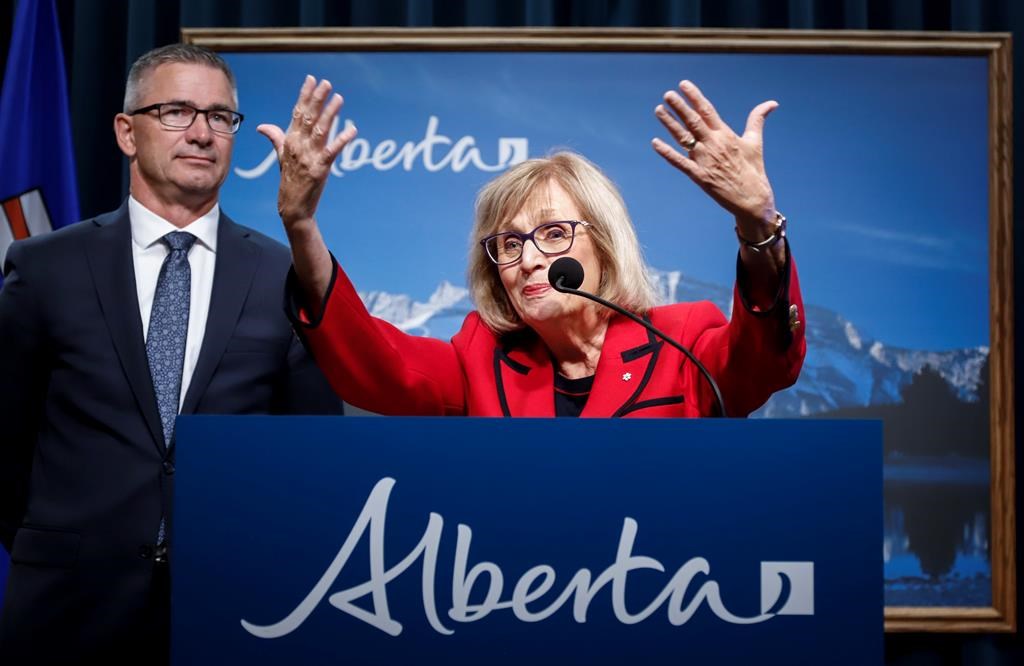The head of the Alberta Urban Municipalities Association agrees with one part of the MacKinnon blue ribbon report that calls for a long-term capital spending plan that is sustainable and predictable. However, what the association that represents the cities and towns across the province disagrees with is the notion of municipalities picking up more of the cost.

The AUMA published its response to last week’s MacKinnon blue ribbon report on the province’s finances on Wednesday. What it likes is a call for collaboration between the province and municipalities on a 20-year infrastructure investment plan.
“We also agree there is only one taxpayer,” the response reads, “which is why the report’s conclusion that increasing the pressure on municipal property taxpayers is the answer to funding capital projects gives us pause.”
“You just can’t download,” Brooks Mayor Barry Morishita told Global News in an interview. “I don’t think that’s an effective way of building Alberta.”
One of the challenges with the MacKinnon report, Morishita pointed out, is that it suggests municipalities should contribute more to infrastructure projects. However, municipalities own and maintain 60 per cent of the province’s infrastructure, while they get only 10 per cent of every tax dollar.
Morishita agrees that as you see in the metro Edmonton area where several municipalities are combining to plan and work together, you’ll likely see more of that in other parts of the province as a way of keeping costs down.
“I know there’s some really good relationships but I also know that there are some very, very poor ones,” Morishita said.

Get breaking National news
“AUMA has been advocating that community building goes beyond borders and that there has to be reasonable sharing of costs and resources in order to build those communities out.”
Watch below: The MacKinnon panel on Alberta’s finances report says the province’s current fiscal crisis is arguably worse than the one the province faced in the early 1990s, and an immediate course correction is required.

Morishita doesn’t know if the province is under the assumption that individual cities and towns have built up reserves to cover additional infrastructure costs. He hopes to talk about that with the Kenney government in the lead up to the late October budget.
“We’re the most transparent level of government. So you can look at our spending, you can see what our tax rates are, you can see the assessments, you see the pool that we can draw from, and speaking from AUMA’s perspective I don’t know of too many urbans that have a whole ton of tax room or are wasting their money.”
Morishita adds that municipalities already share information, and will point that out when the opportunity presents itself.
“We talk about budgeting. We talk about infrastructure costs. We talk about lack of resources and how they’re having to make dollars stretch, and I think we do a dang fine job with that. I’d like to sit down and say, ‘Hey, we can do it some more if you want, but we have got to work together on this.'”
High expense projects listed by the AUMA include water and waste water treatment plants, recreation facilities and emergency services including fire and police.
The AUMA has been working with its county counterparts, the Rural Municipalities Association, to find new sources of revenue since they are limited to property taxes, of which the provincial government takes roughly 30 per cent of the property tax base for education.
In previous years, the province didn’t collect all of that segment of the property tax so municipalities could use it, however in these tough fiscal times, Morishita anticipates the province won’t be in a position to leave any extra revenue for cities and towns to spend.







Comments